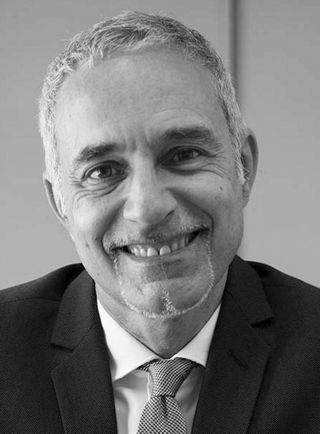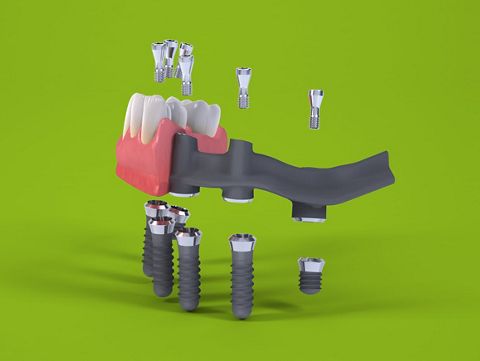“With the Straumann® Pro Arch protocol, the patient is already reassured of the final result from the very beginning of the procedure”
An interview with Dr. Sergio Piano, Italy
The “Straumann® Pro Arch” concept is an efficient and simple method to treat the edentulous patient with immediate loading, providing a rehabilitation that not only produces high-quality esthetic results but also proves cost-effective. This concept, supported by scientific literature, strongly focuses on the pre-operative planning, allowing for a less invasive approach and a reduced number of implants. The pre-visualization of the final result, already available from the outset of the procedure, leads to an optimization of the implant placement and an improvement in the final esthetic appearance.
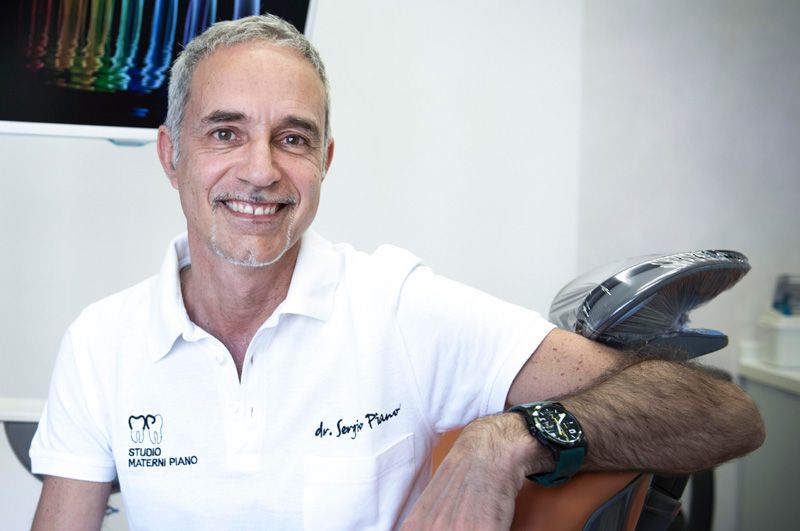
Dr Piano, you are a very well reputed Straumann® Pro Arch fan, and before Straumann’s edentulous treatment concept was globally rolled-out you developed the “Wonderbridge Protocol” for edentulous patients. We would like to know more about your expertise and this protocol. How did it originate? How did you treat edentulous patients before this protocol and what is different with this approach?
Until around ten years ago, the treatment used for edentulous patients was based on a large number of implants placed in the available bone followed by an immediate loading procedure. In cases where the bone was lacking, it was necessary to carry out a bone augmentation and to load the implants after integration. Obviously, this meant that a removable provisional prosthesis was needed. For these reasons, after a few years I realized that, in many cases, this traditional approach was far too complex, protracted, and also costly and, although Dr. Malo had set a new standard for the treatment of edentulous patients, the simplified approaches available to us at the time more often than not led to what I felt was not such a satisfactory esthetic result. Therefore, reflecting on this dilemma, I came up with the idea of creating a protocol whereby a reduced number of implants was placed, not only in line with the available bone but also on the basis of ideal prosthetic planning. In this way I succeeded in achieving a most satisfying final esthetic result whilst, at the same time, preserving the simplicity of the original treatment. Moreover, it also involved a considerable reduction in the cost of the procedure, thus making it more attractive to the patient. In defining the “Wonderbridge Protocol”, I would say that it is along the lines of an immediate loading technique on a limited number of implants, but inspired by a different philosophy. That was the solution established before the Straumann® Pro Arch became fully available on a global scale.
What are the key points of this protocol compared to other solutions currently available on the market?
In addition to the advantages already mentioned, in my opinion there are a couple of important aspects to be considered. The approach can be considered less invasive and less radical compared to standard simplified approaches. In fact, with the latter type of approaches there is a fixed geometric positioning of the implants, together with a pre-determined dramatic reduction of the alveolar bone in the frontal area. This leads to a pre-defined standard clinical situation that doesn’t actually allow for a completely personalized prosthetic solution, whereas with the Straumann® Pro Arch approach and the Wonderbridge protocol you have the option to replace the “geometric” approach with an “anatomical” one. This means that there is neither a dramatic reduction of bone nor a pre-determined angulation of the implants, thanks to their positioning being in line with the anatomy of the jaw. This makes the procedure less invasive compared to complex treatments using bone grafting/augmentation, easier to be performed by the dentists and, importantly for the patient, results in a more natural final appearance. Moreover, the most remarkable key point is that, thanks to the prosthetic planning stage at the outset, the dentist is able to have a pre-visualization of the final result prior to starting the surgical procedure. This set-up can then be shown to the patient so as to establish whether their personal opinion is in line with their expectations. In this way, from the very beginning of the procedure, the patient is already reassured of the final result.
"With the Straumann® Pro Arch approach and the Wonderbridge protocol you have the option to replace the “geometric” approach with an "anatomical" one. This means that there is neither a dramatic reduction of bone nor a pre-determined angulation of the implants, thanks to their positioning being in line with the anatomy of the jaw. This makes the procedure less invasive compared to complex treatments using bone grafting/augmentation, easier to be performed by the dentists and, importantly for the patient, results in a more natural final appearance."
When and why would you recommend this protocol?
This is a solution that is considered to be more than valid in cases where the patient has a reduced amount of bone in the posterior area due to the presence of anatomical obstacles, and where a less invasive solution is of major importance. Furthermore, this protocol, in offering such an efficient and rapid solution, is highly advantageous for patients who would previously have anticipated a protracted procedure and so could easily have been discouraged from embarking on the treatment in the first place. Such cases could include patients with hopeless teeth or those with fully edentulous jaws.
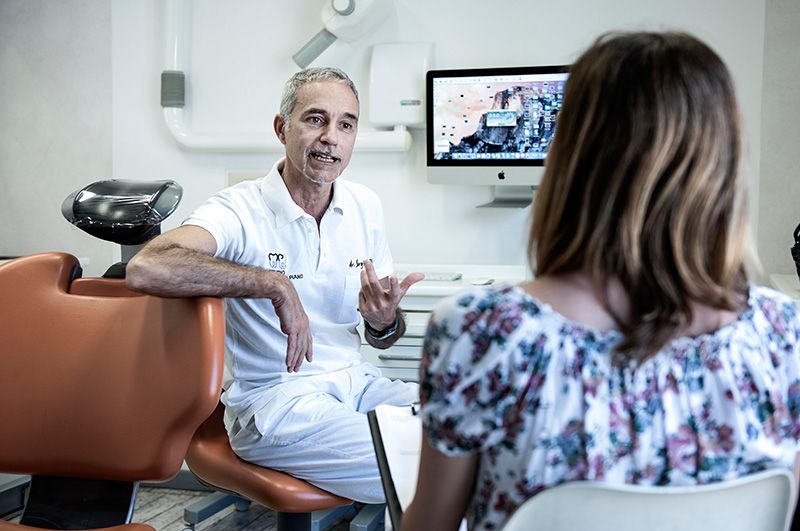
In the COIR article* we have seen cases documented in 2008. How long have you actually been applying this protocol to your patients? And in what way, if at all, has it changed?
I started in 2007, initially with just a couple of patients, using a basic technique that has been perfected over the years. Then, in 2008, a protocol was established that took into consideration the need for an affordable procedure, whilst also achieving an esthetically-pleasing result. In fact, the 21 maxillary cases documented in the COIR study were treated with this approach – using a laser-welded framework and resin veneering – which produced extremely positive results: that is, no issues were noted either with the implants, fractures or prostheses. As a consequence, in order to reach the highest level of quality for the protocol, over the years both the framework and the veneering material have been improved, and new innovative approaches like CADCAM workflow, guided surgery, and others have been integrated, thus offering not only an economically viable solution, but also a state-of-the-art prosthetic result.
"We can say that Straumann has now created a comprehensive and complete range of products that fully support our various solutions for the treatment of edentulous patients."
Are the type of components used considered important in supporting this protocol?
In fact, it is thanks to the components available today that we are able to provide these high-quality results for our patients. When I initially started to carry out the Wonderbridge procedure, it was specifically with Straumann® Bone Level implants and the Straumann® MultiBase abutment portfolio. It emerged that these components performed really well, even though in certain specific clinical situations, for instance involving very low bone density or extreme implant inclination, it was, at times, possible to encounter certain difficulties. However, today, this protocol is successfully based on the Straumann® Pro Arch solution and its main components, Straumann® Bone Level Tapered implants and the screw-retained abutment portfolio, and these components truly represent a notable improvement in the challenging treatment of edentulous patients. Principally, the introduction of the Straumann® Screw-Retained Abutment portfolio has enabled us to work with a wide range of components capable of meeting all the treatment criteria, allowing the dentist to find the ideal combination for each individual prosthetic realignment, without having to make compromises. This product family also includes components that facilitate the differentiation of the prosthesis type used in terms of material, technique and shape. In fact, gluing connectors (Straumann® Variobase copings) give a further option for the fabrication of the prosthesis, making the use of this system very flexible, including in the lab. Furthermore, we now also have at our disposal high-quality additional alternatives for the final prosthesis, such as the customized framework produced in the Straumann® Milling Center, based in Germany, or the production of frameworks from one of Straumann’s partners, namely Createch Medical, a high-precision manufacturer of customized framework and prosthetic components based in Spain. In addition, the Straumann® Bone Level Tapered implant, launched a few years ago, has allowed us to gain increased implant stability for immediate loading when dealing with poor bone conditions. In fact, in my own practice in Genoa on a daily basis BLT implants replace BL ones whenever a Straumann® Pro Arch procedure is performed. So we can say that Straumann has now created a comprehensive and complete range of products that fully support our various solutions for the treatment of edentulous patients.”
"Nowadays, the demand among patients for an implant-supported fixed prosthesis that combines an esthetically-pleasing result with an affordable cost is very high. Consequently, dentists are having to turn to alternative and viable solutions, like the Straumann® Pro Arch."
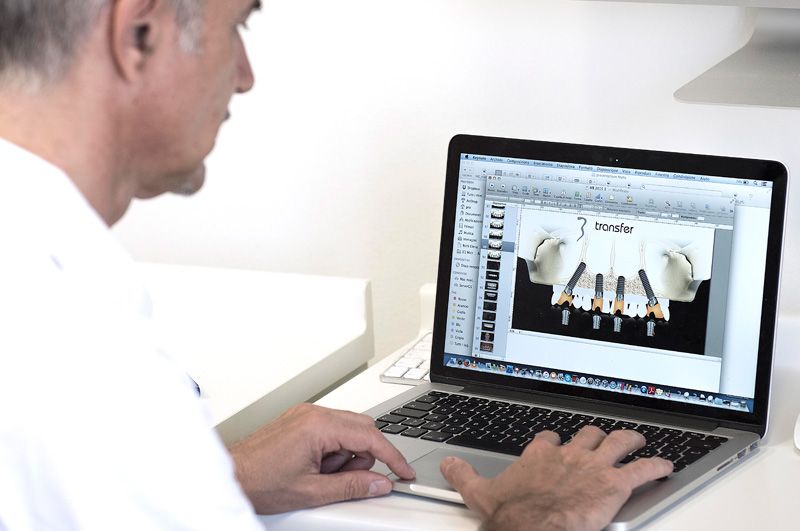
To what extent do you think this kind of solution is needed today?
Nowadays, the demand among patients for an implant-supported fixed prosthesis that combines an esthetically-pleasing result with an affordable cost is very high. Consequently, dentists are having to turn to alternative and viable solutions, like the Straumann® Pro Arch. For this reason, over the past two years there has been strong demand for more information about this protocol and its implementation, to the point that a large number of courses have been set up in several countries to meet this need. To give you a rough idea of the interest in this approach, over the past 4 years alone I have held more than 20 one- and two-day courses and presented several lectures, talking to almost 1000 colleagues and participants in countries ranging from the Balkan region, Arabia to Eastern Europe. In Italy alone we have held a dozen events for more than 500 participants. Personally speaking, I believe that, in the everyday dental practice, a solution like the Straumann® Pro Arch should not be overlooked as it can be considered a most viable and invaluable solution for the dentist whilst also successfully meeting the patient’s expectations, both in terms of affordability and esthetics.
